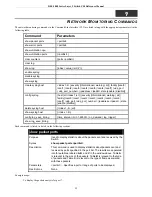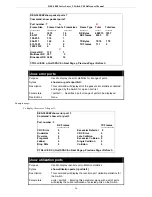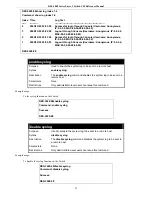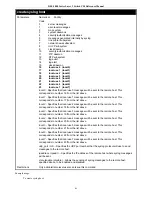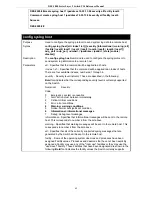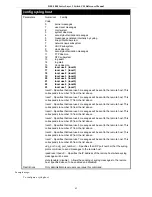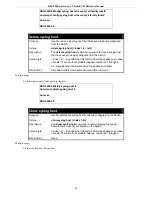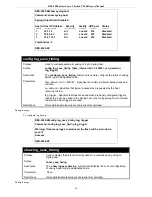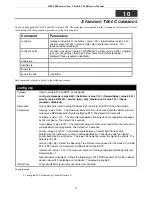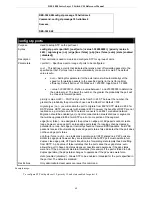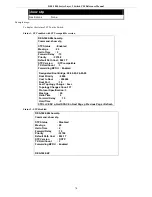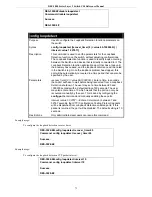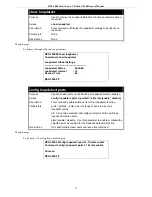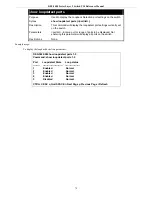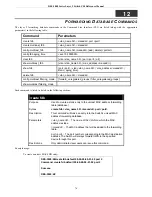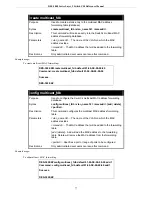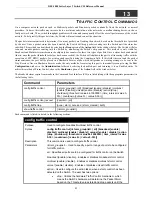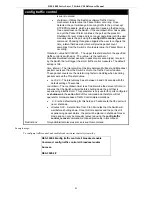
DES-3000 Series Layer 2 Switch CLI Reference Manual
DES-3026:4#config stp maxage 18 hellotime 4
Command: config stp maxage 18 hellotime 4
Success.
DES-3026:4#
config stp ports
Purpose
Used to setup STP on the port level.
Syntax
config stp ports <portlist> {cost [auto | <value 1-200000000>] | priority <value 0-
240> | migrate [yes | no] | edge [true | false] | p2p [true | false | auto] | state [enabled
| disabled]}
Description
This command is used to create and configure STP for a group of ports.
Parameters
<portlist>
−
Specifies a port or range of ports to be configured.
cost
•
•
−
This defines a metric that indicates the relative cost of forwarding packets to the
specified port list. Port cost can be set automatically or as a metric value. The default
value is
auto
.
auto
– Setting this parameter for the external cost will automatically set the
speed for forwarding packets to the specified port(s) in the list for optimal
efficiency. Default port cost: 100Mbps port = 200000. Gigabit port = 20000.
<value 1-200000000>
- Define a value between 1 and 200000000 to determine
the external cost. The lower the number, the greater the probability the port will
be chosen to forward packets.
priority <value 0-240>
−
Port Priority can be from 0 to 240. The lower the number, the
greater the probability the port will be chosen as the Root Port. Default = 128.
migrate [yes | no]
–
yes
will enable the port to migrate from 802.1d STP status to 802.1w
RSTP status. RSTP can coexist with standard STP, however the benefits of RSTP are not
realized on a port where an 802.1d network connects to an 802.1w enabled network.
Migration should be enabled (
yes
) on ports connected to network stations or segments
that will be upgraded to 802.1w RSTP on all or some portion of the segment.
edge [true | false]
–
true
designates the port as an edge port. Edge ports cannot create
loops, however an edge port can lose edge port status if a topology change creates a
potential for a loop. An edge port normally should not receive BPDU packets. If a BPDU
packet is received it automatically loses edge port status.
false
indicates that the port does
not have edge port status.
p2p [true | false | auto]
–
true
indicates a point-to-point (P2P) shared link. P2P ports are
similar to edge ports however they are restricted in that a P2P port must operate in full-
duplex. Like edge ports, P2P ports transition to a forwarding state rapidly thus benefiting
from RSTP. A p2p value of false indicates that the port cannot have p2p status.
auto
allows the port to have p2p status whenever possible and operate as if the p2p status
were
true
. If the port cannot maintain this status (for example if the port is forced to half-
duplex operation) the p2p status changes to operate as if the p2p value were
false
.
state [enabled | disabled]
−
Allows STP to be enabled or disabled for the ports specified in
the port list. The default is disabled.
Restrictions Only
administrator-level users can issue this command.
Example usage:
To configure STP with path cost 19, priority 15, and state enabled for ports 1-5.
68


